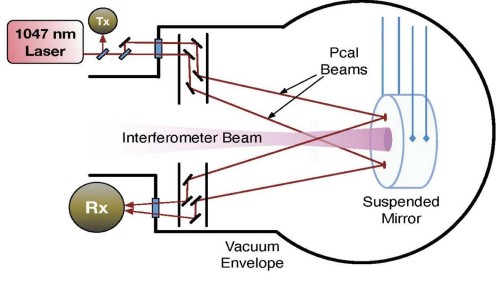Dripta Bhattacharjee, Kenyon's post doctoral researcher in physics, will be presenting during this week's colloquium on gravitational wave detectors, how they are calibrated, and how physicists continue to improve that process of calibration to increase accuracy.
The Laser Interferometer Gravitational-wave (GW) Observatories (LIGO) in the USA started their fourth observing run (O4) in May 2023. The detector in Italy, Virgo, and the one in Japan, KAGRA, are slated to join LIGO in the observation run soon. Nearly 100 GW events have been detected by the network of GW detectors since the first detection in 2015. Improved detector sensitivities for O4 suggest significantly higher event rates. As signal-to-noise ratios increase, reduction of calibration uncertainties becomes increasingly important for optimally extracting the astrophysical information encoded in the GW signals. The observatories employ systems known as photon calibrators (Pcal) to generate displacement fiducials at the 1x10-17 m level via radiation pressure. These systems rely on calibrated laser power sensors to enable accurate and precise displacement calibration. This technique has been developed in LIGO for more than a decade. To provide absolute calibration accuracy at a sub-percent level for the latest O4 run, the global network of GW observatories along with NIST and PTB, national metrology institutes in the US and Germany, have implemented a novel calibration scheme. Additionally, the new scheme should increase our confidence in our calibration accuracy and reduce relative calibration errors between observatories in the GW network. Providing absolute calibration of the GW data with uncertainty below 1% is imperative to achieving interferometer calibration at a percent accuracy level. This is necessary for enabling interesting science, for example resolving the SHoES-Planck tension in Hubble parameter estimation.
Join us on Friday, Nov. 3, for this exciting presentation from Bhattacharjee. Lunch will be available in Hayes 216 from 11:45 a.m. to 12:15 p.m. and the presentation will begin in Hayes 211/213 at 12:10 p.m. We hope to see you there!
